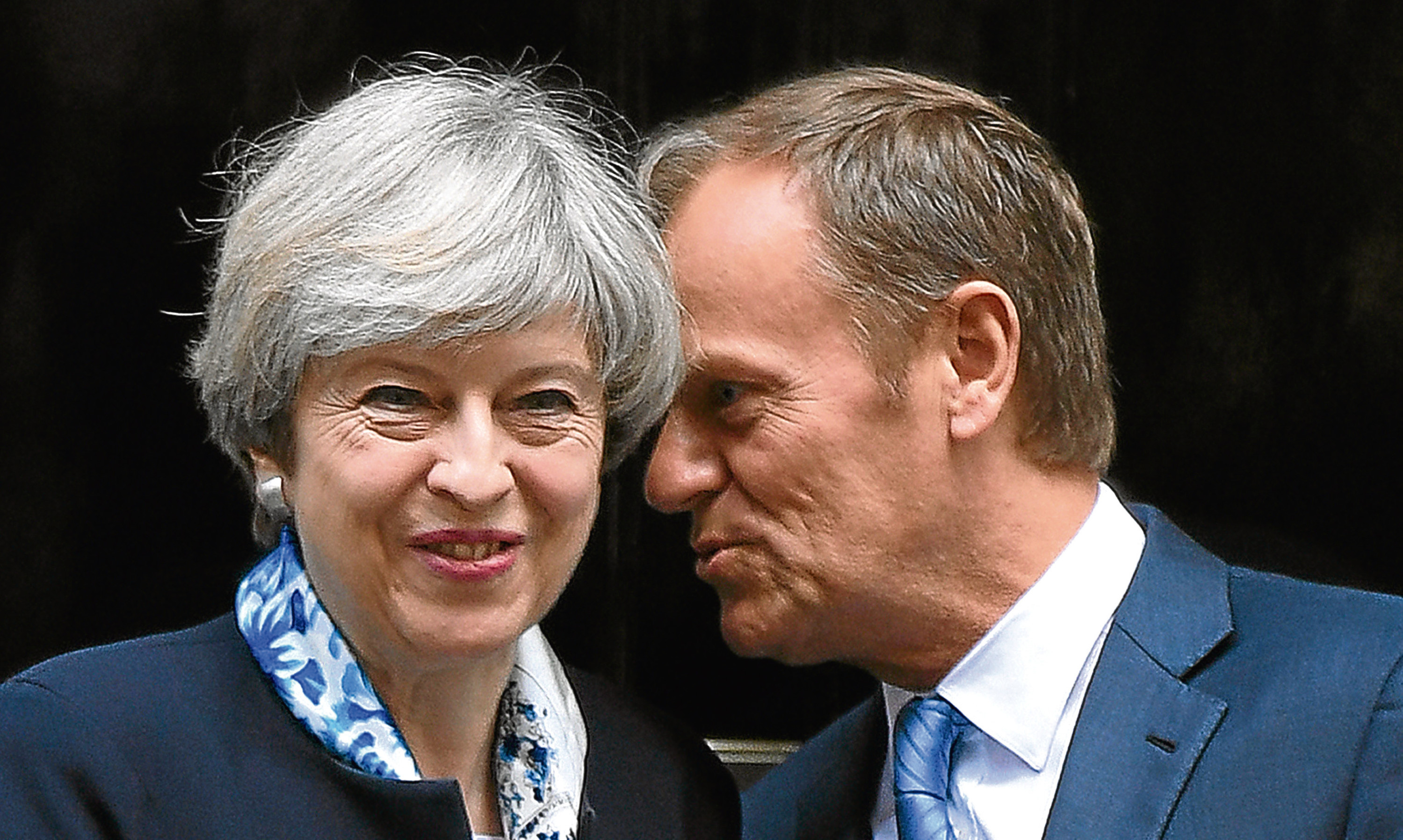The General Election is running along familiar lines because the SNP and the Tories are reluctant to talk about what is really at stake – the future of Britain.
The SNP appears undecided if this is an election about independence but there is no doubt it’s about Brexit. Theresa May called the vote to strengthen her hand in talks with Brussels
Yesterday, the European Commission published a paper (PDF link) setting out its negotiating position.
Its title is: “Recommendation for a (European) Council decision authorising the opening of the negotiations for an agreement with the United Kingdom of Great Britain and Northern Ireland, setting out the arrangements for its withdrawal from the European Union.”
This document is arguably more important than any manifesto or stage-managed speech you’ll hear before June 8.
Whatever promises are made on the NHS, tax or education in the course of this election, they will all be subject to Brexit. The negotiations to leave the EU will underpin matters of the economy and law which affect everything else.
The best advice is don’t believe anyone’s promises, as the UK is about to enter a brawl which could leave the entire state bruised and all bets off.
We have some clarity – not least an exit date. The agreement should set a withdrawal date which is at the latest March 30 2019 at 00:00(Brussels time).
The EU is not going to allow the UK to negotiate with the heads of government of Europe – Article 50 of the Treaty on European Union confers on the Union an exceptional horizontal competence to cover in this agreement all matters necessary to arrange the withdrawal.
In other words, London talks to the negotiator and no one else.
This rejects Theresa May’s tactic to date, of seeking support from individual capitals across the continent.
It also rejects the uncertainty over people’s lives depending on where they live.
Safeguarding the status and rights of the EU27 citizens and their families in the United Kingdom and of the citizens of the United Kingdom and their families in the EU27 member states is the first priority.
Theresa May moved to settle this early on in her premiership but then decided to make it a bargaining chip – a cynical miscalculation.
If she had agreed that citizens were secure no matter where they lived, she would have appeared generous and pragmatic – useful qualities to project when entering such a tough deal.
Rightly, the EU recognises the unique situation of Ireland – nothing in the agreement should undermine the objectives and commitments set out in the Good Friday document.
That clause echoes London’s stated view but it is not obvious how this is achieved.
Dublin and Belfast face major problems ahead as a consequence.
Various papers floated the idea that European Law would still prevail post Brexit – this turns out to be false as only ongoing cases will be bound by EU law.
The agreement should recall that Union law ceases to apply to the United Kingdom on the date of entry into force of the withdrawal agreement.
I wrote at the time of the Brexit vote that all talk of “hard” and “soft” Brexit was misleading – there would just be Brexit as defined by the EU.
That remains the case.
The UK is leaving the European Union – as the people of the UK voted to do.
That it will have huge consequences has been true all along.
This document in effect says let’s follow the rules, let’s get on with it and let’s not kid ourselves.
Presumably that is exactly what pro-Brexit voters wanted.
When Theresa May says Brussels will find her a “bloody difficult woman” – a strangely sexist remark designed to remind us of Margaret Thatcher – she makes no sense.
The people voted for Brexit – the EU is giving them Brexit – what’s there to be difficult about?
The answer to that lies in these parts of the document.
An orderly withdrawal of the United Kingdom from the Union requires settling the financial obligations resulting from the whole period of the UK membership in the Union.
The small print explains it all. A calculation of the global amount that the United Kingdom has to honour in order to settle its financial obligations toward the Union budget, all institutions or bodies established by the Treaties and other issues with a financial impact. The global amount may be subject to future annual technical adjustments.
The Financial Times, using the EU’s calculator, reckons it will take 100 billion Euro to settle that bill
Assuming that is true and assuming Theresa May is PM, then she is facing a moment not unlike Alex Salmond’s currency woes of 2014.
She can follow the law and face a huge bill (as might have been the case if Scotland used sterling post-indy) or threaten to ignore the bill and so become an outcast.
“Bloody difficult” will not cut it – the UK didn’t prepare for independence and is paying the price.
